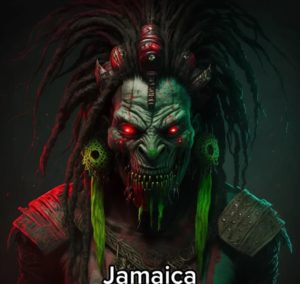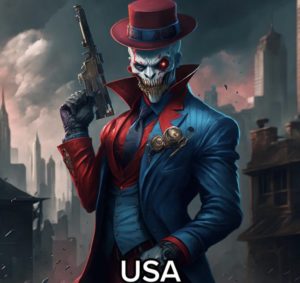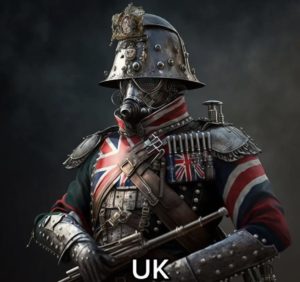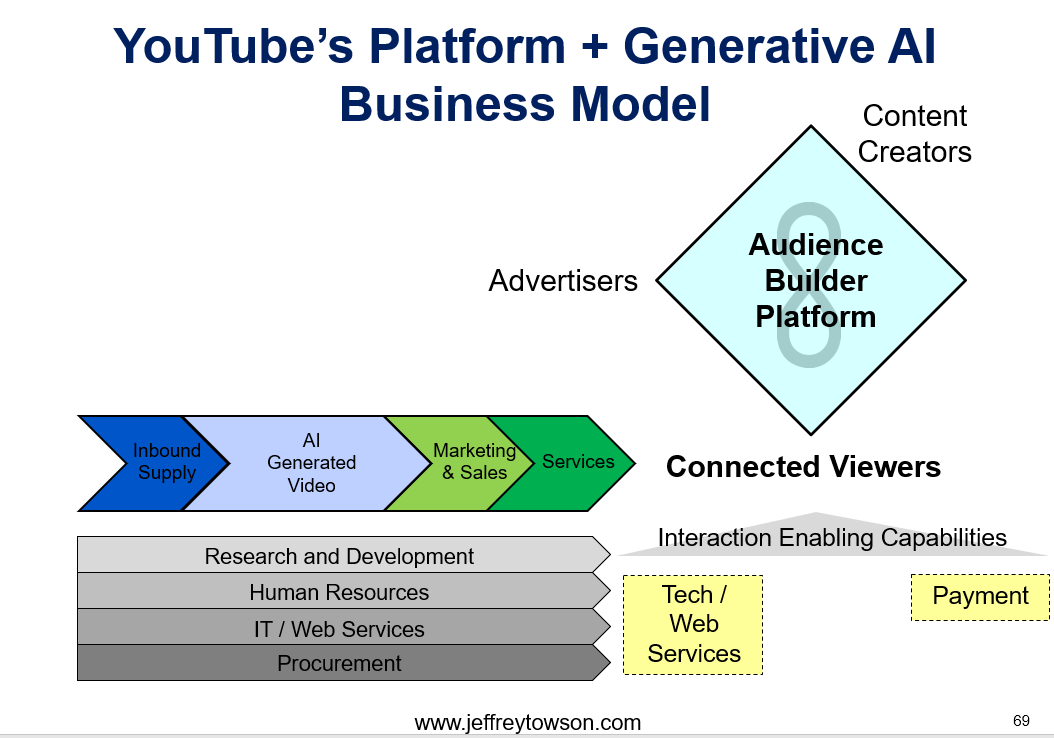In Part 1, I detailed two examples of how AI-powered services are going to be superior to digital platforms (in some cases). They were:
- Uber vs. Robotaxis. Autonomous driving as a service is going to mostly replace ride-sharing platforms.
- Google Search vs. Neema. ChatGPT and other LLM content creation services are creating alternate and sometimes better solutions for inquires than search (in many use cases).
Which brings me to Generative AI beyond just text, which is really ground zero for the disruption of some platform business models.
Example 3: YouTube’s Platform vs. Generative AI Videos as a Service
Think about why YouTube is so better than cable television and streaming services like Netflix. Cable television and Netflix offer big bundles of content (which is good), but they are still linear business models that must purchase and/or create content.
YouTube’s business model is an audience builder platform. It is in the business of enabling interactions between content creators and viewers. It doesn’t create or purchase content. And because of this it offers almost unlimited content. And it has grown to global scale. Billions of people use it. It has tremendous demand side scale, which it then matches with a long tail of content on the supply side.
It’s just a more powerful business model. Netflix and other pipeline content businesses are mostly in the business of creating content and signing up subscribers. YouTube, however, is in the business of giving content creators better and better tools – and doing matching with viewers.
It actually gets better. Because the primary user group for YouTube is not really viewers. It is “connected viewers”. People share and respond to video and photo content in a way to they don’t for most other products. So it is even more powerful on the demand side than it appears.

Note: In China, video platforms (iQiyi, Tencent Video, Tudou) also do significant content production themselves (see the yellow box at the bottom). This is an attempt to differentiate in a ruthless oligopoly. They are often described as “YouTube plus Netflix” business models.
So how does Generative AI change this?
Generative AI is basically giving content creators incredibly powerful tools. And it is dramatically lowering the barrier to enter. Everyone can now create photos, paintings, designs, avatars, music, and increasingly videos. Generative AI videos are emerging right now and it is happening very quickly. Apps like Runway not only let you create videos from photos and text. They can increasingly create videos from other videos as as inputs.
There will soon be a sea of content creators generating high quality videos. Probably the first type is animated shorts, which are already high quality. You can easily create Disney-quality characters. For example, here are some supervillains created on Midjourney, where the prompt was to create villains based on country identity.



You can then have ChatGPT create stories around these characters. And it can write the dialogue. That pretty much gets you a comic book. People are doing this right now. It takes like 30 minutes.
But you can also create unique voices for them and they will speak the dialogue. You can also create background music in any style you want. And then you put all that together into something like Runway and can have an animated show about your characters. That is pretty much all Disney has been doing since Walt Disney first created the character Mickey Mouse in 1928. Disney built its empire based on the creation of iconic characters and animated movies. That required specialized skills and they built serious scale advantages in animated movie production (which takes several years and is usually more expensive). Well, now anyone can do what Walt Disney did. And for almost nothing. And in like an hour.
“Just remember, it all started with a mouse.” – Walt Disney
Take a look at the below photos.
 I created these on Midjourney with the prompt “motorcycle racer in a blue helmet in the leather blue and white jacket stands near the garage, motorcycle Ducati in the distance, in more detail, Photo Realistic, in more detail, focal length–18 mm –ar 3:2 –q 2 –v 4 -“. It took about 20 seconds and gave me four results. I like the top right one. But I could have refined these easily. and I can now use these photos as inputs for more content.
I created these on Midjourney with the prompt “motorcycle racer in a blue helmet in the leather blue and white jacket stands near the garage, motorcycle Ducati in the distance, in more detail, Photo Realistic, in more detail, focal length–18 mm –ar 3:2 –q 2 –v 4 -“. It took about 20 seconds and gave me four results. I like the top right one. But I could have refined these easily. and I can now use these photos as inputs for more content.
It’s crazy.
And we are already seeing a whole range of generated AI videos, not just in animation (which is easier). Pretty much everything Hollywood does looks like it is going to be hit. Television shows, movies and even porn. Last week, Twitch streamer Brandon Ewing got caught watching deepfake AI-generated porn videos of his colleagues in the streaming world. He did a teary apology. And there are now tons of OnlyFans-type jpegs circulating that were created by AI.
My first take on this was that generative AI (animated shorts, TikTok-like videos, television episodes and eventually movies) is going to dramatically expand the supply side of platforms like YouTube and TikTok, making these platforms much more powerful. The sea of high quality content will be great for viewers but will also shift even more power to the platforms that control both demand and matching.
I think that is true. But I also think these platforms are going to be disrupted as well. What if AI-powered services can bypass the platform? Just like with Uber and Google Search? What if an AI-powered service just generates video entertainment on demand? And it is personalized to the user? What if instead of searching through content created by people, AI just creates content on-demand for you. Some examples:
- I like the character Jack Reacher. So, I watch the movies with Tom Cruise (not great) and the Amazon tv shows (better). And I read all the books repeatedly. But what if an AI just generates a new Jack Reacher book for me every day? And what if it personalizes the story to the types that I like?
- I like travel videos, which I watch on YouTube. They are mostly uploaded by travel vloggers. But what if AI can just generate a travel video about any upcoming trip I have? It can create a video with fake people. Or just be a documentary. And, most importantly, the travel vlog can be highly personalized to the things I like. Instead of showing the standard tourist sites, it shows me the best beaches, gyms, coffee shops and museums (my standard stuff).
- How about animated movies? I can ask the AI to create me an animated tv show about Iron Man vs. Batman? Or about entirely new characters that are based on Iron Man and Batman in ancient Egypt?
Don’t all those AI services sound better than searching through millions of uploaded videos? AI Generated content as a service looks like a serious threat to dominant digital platforms like YouTube, TikTok and OnlyFans.
Keep in mind, OnlyFans is also a platform business model. Not unlike YouTube, but with a much more powerful monetization model. And it turns out AI is really good at generating these types of photos and videos. You can’t tell they are not real people. And soon these videos will be interactive so people will will be able to chat with them. It will be a thotpocalypse.
As I am writing this, numbers are coming out about the revenue and subscribers the streaming services are losing. Peacock just recorded $2.5 billion of losses for 2022. Even giants like Netflix and Disney+ are trending down in subscribers. Competition in content creation is already terrible. And the economics of content creation businesses are going to collapse. You soon won’t be able to charge anything. It’s a bad business that is about to get much worse.
***
So what’s the solution for YouTube and TikTok?
I think we will see a pivot to “pipeline plus platform”. They will need to offer both (just like Google Search). Here’s what I think the dominant business model will look like for most entertainment.

3 Types of Generative AI Content
I’ve been thinking about who is getting and not getting disrupted by Generative AI. I started with content creators (everyone in Hollywood, plus everyone who writes). Then I realized platforms are going to be hit as well. Now I’m thinking other content creator tool companies (like Adobe) are also in trouble. It’s hard to figure it out.
So I’ve come up with 3 types of generative AI content. Here’s my working list.
Type 1: Technical Content in the Real World (i.e., Not in Man-Made Systems)
This is about generated content when there is a right and a wrong answer.
- What happens when a person with diabetes consumes both alcohol and aspirin?
- What year did James Clerk Maxwell die?
- Can oil be extracted from the gulf of Mexico for less than $70 a barrel?
Generative AI, like all AI, is about prediction. But in these cases, there is a right and a wrong answer. That will limit the impact of AI on a business. It needs to be correct to be useful. And being right or wrong in the real world is more difficult than in a man-made system. Human systems are fairly organized and we create the rules. It’s easier to be right in the legal system (based on a set of laws) than in human biology. Reality is much messier.
And we can put some additional qualifiers on this:
- What is the threshold for an acceptable right answer? Do you have to be 90% right or just 50%?
- Is the right answer static or constantly changing?
- What are the consequences of being wrong? Do people die? How long before we know if the prediction is right or wrong?
In this category, Generative AI is not great. It requires human judgment. You can’t just give people AI and then they are practicing doctors.
Some examples:
- Medical decisions. There is a right and a wrong in reality. And the consequences for being wrong can be high in many cases (cancer) but not in others (the flu). However, medical knowledge is mostly static knowledge. The right answer doesn’t keep changing.
- Stock analysis. The stock goes up or down. And things are unpredictable in the long-term. It is a chaotic reality. AI tends to be pretty good in the short term. But not in the long-term.
- Marketing. There is a right and a wrong in what works. The consequences for being wrong are not huge. But what works is constantly changing.
Type 2: Technical Content in Man-Made Systems
This is about generated content and prediction where there is also a right and a wrong answer. But it is within a system we created, so it’s much more orderly. If the first category was autonomous dune buggies going everywhere around the world, this is autonomous busses operating within a designed business park. With clear lanes and signs. The former is the chaotic real world. The latter is a designed environment that the AI can easily understand.
So, in this category, we can look at:
- Coding and programming. AI is very good at this. It understands the rules of Python and it can follow them. And there are no consequences for being wrong. If it doesn’t work, you get error messages and you can just debug it. According to a16z, GitHub Copilot is now generating nearly 40% of code in the projects where it is installed.
- Legal system. AI is getting really good at writing contracts, which use standard language and clauses. Although the consequences of being wrong can be significant in many cases.
- Basic product design and engineering. Midjourney and other AI is already good at creating entirely new products with some functionality. Shoes and hats don’t really have a right and a wrong. But vacuum cleaners and simple appliances have to work and not breakdown.
Type 3: Creative Content (i.e., Ground Zero for Disruption)
This is most of the examples I have been talking about. There is no right or wrong here. You either like the design, painting and video or you don’t. People either watch it or not. But there is no technical right or wrong. Generative AI is really moving fast in this area.
Plus, the threshold for acceptability can be very low (animation, paintings). It is higher in music, singing, and quality movies. But there are no consequences for being wrong. AI can generate thousands of songs and then just see which people like.
Here are some examples for this category (copied from a16z):
- “Art generation: The entire world of art history and pop cultures is now encoded in these large models, allowing anyone to explore themes and styles at will that previously would have taken a lifetime to master.”
- “Gaming: The dream is using natural language to create complex scenes or models that are riggable; that end state is probably a long way off, but there are more immediate options that are more actionable in the near term such as generating textures and skybox art.”
- “Media/Advertising: Imagine the potential to automate agency work and optimize ad copy and creative on the fly for consumers. Great opportunities here for multi-modal generation that pairs sell messages with complementary visuals.”
- “Design: Prototyping digital and physical products is a labor-intensive and iterative process. High-fidelity renderings from rough sketches and prompts are already a reality. As 3-D models become available the generative design process will extend up through manufacturing and production—text to object. Your next iPhone app or sneakers may be designed by a machine.”
- “Copywriting: The growing need for personalized web and email content to fuel sales and marketing strategies as well as customer support are perfect applications for language models. The short form and stylized nature of the verbiage combined with the time and cost pressures on these teams should drive demand for automated and augmented solutions.”
Final Point: The Obvious Winners Are Innovation Platforms. OpenAI / Microsoft and Google. Maybe Baidu.
As mentioned, lots of content creators and publishers are getting disrupted. And the likely future of digital platforms is to go “pipeline + platform”.
But the big generative AI companies (Google, Microsoft / OpenAI) are ultimately innovation platforms. Just like Android and iOS. They will become the innovation platforms that developers will build their intelligent apps on. That will give them global network effects. Here is the explanation from a16z.
“The best Generative AI companies can generate a sustainable competitive advantage by executing relentlessly on the flywheel between user engagement/data and model performance.”
That is true in terms of operating performance. But long-term this is fight to create global network effects on an innovation platform. Microsoft / OpenAI is in the strongest position. Google should be a serious player. Baidu is set to release their LLM soon. And Apple is nowhere to be seen. We’ll see.
***
That’s what a lot of theory. I hope these two articles have been helpful. Cheers, Jeff
————
Related articles:
- How Generative AI Services Are Disrupting Platform Business Models (1 of 2) (Tech Strategy – Daily Article)
- The Winners and Losers in ChatGPT (Tech Strategy – Daily Article)
- Why ChatGPT and Generative AI Are a Mortal Threat to Disney, Netflix and Most Hollywood Studios (Tech Strategy – Podcast 150)
From the Concept Library, concepts for this article are:
- Generative AI
- Innovation Platform
- Audience Building Platform
- AI-Powered Service Business Model
- Pipeline Plus Platform Business Model
From the Company Library, companies for this article are:
- OpenAI / ChatGPT
- Microsoft
- Midjourney
- YouTube
———–
I write, speak and consult about how to win (and not lose) in digital strategy and transformation.
I am the founder of TechMoat Consulting, a boutique consulting firm that helps retailers, brands, and technology companies exploit digital change to grow faster, innovate better and build digital moats. Get in touch here.
My book series Moats and Marathons is one-of-a-kind framework for building and measuring competitive advantages in digital businesses.
This content (articles, podcasts, website info) is not investment, legal or tax advice. The information and opinions from me and any guests may be incorrect. The numbers and information may be wrong. The views expressed may no longer be relevant or accurate. This is not investment advice. Investing is risky. Do your own research.
